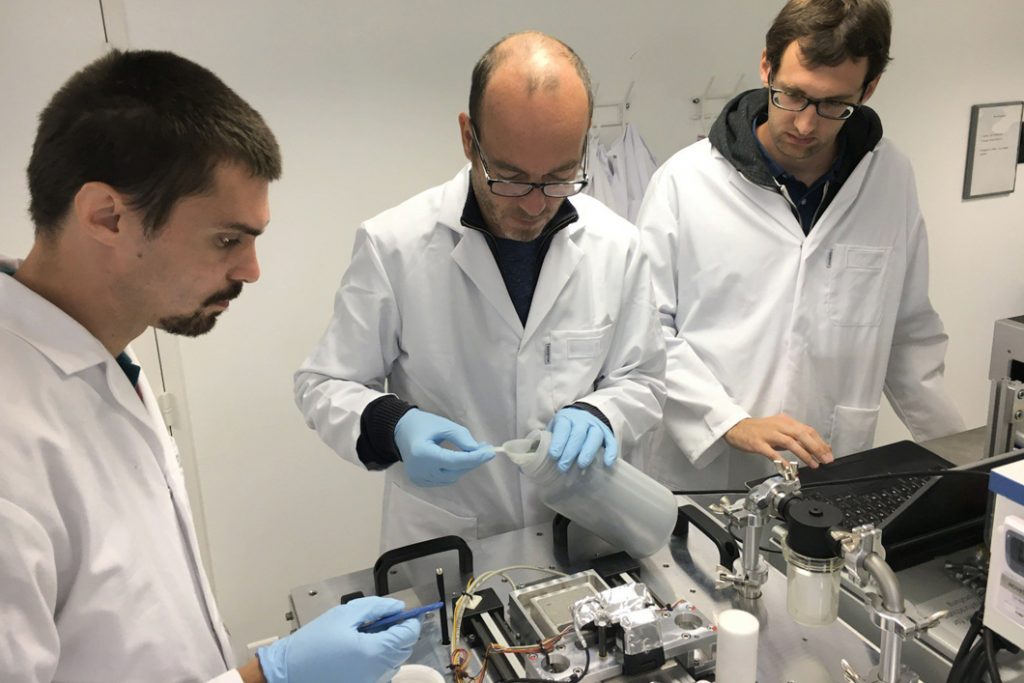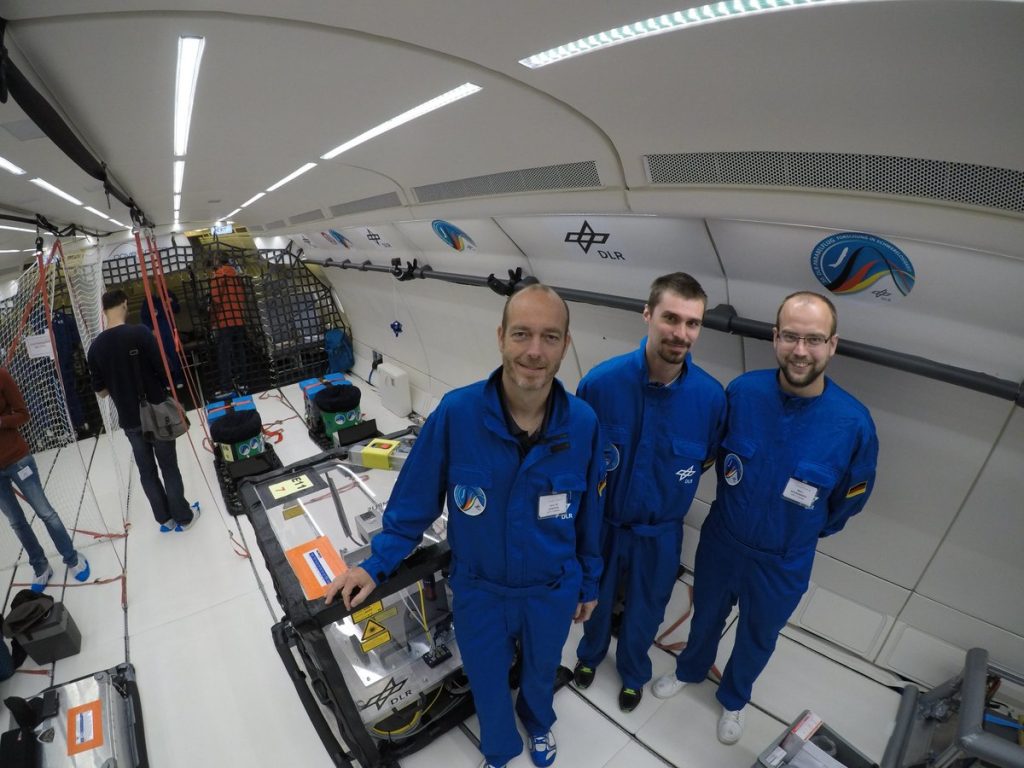Researchers at the German Federal Institute for Materials Research and Testing (BAM) and TU Clausthal are working on a project titled “Powder-based additive manufacturing in zero gravity.” Poised to compete with microgravity metal 3D printing efforts from the likes of NASA and Made In Space, the team’s experiments have been conducted in a number of parabolic flights this fall above Mérignac, France.
Professor Jens Günster, head of Ceramic Processing and Biomaterials at TU Clausthal, has shared further details of the process that already has a patent in place for its protection.

Metal 3D printing in weightlessness
TU Clausthal’s metal 3D printer in based on the binder jetting technique. In the “zero gravity” version a “flowable powder” is jetted layer by layer. Instead of gravity, a powerful jet of air is used between each layer to stabilize the part.
Professor Günster explains, “A test facility has been constructed for the test which can map the gas-flow-assisted powder deposition as a process and meets the extreme safety requirements in an aircraft and during parabolic flights.”
“For instance, very high mechanical stability that withstands nine times the acceleration due to gravity is required.”
“To prevent the powder from escaping the facility [sic], the layer application process must take place in a hermetically sealed double enclosure. A gas flow through the powder towards the building platform ensures the powder is trapped and produces a defect-free layer application.”
Back down to Earth
The team has conducted test prints aboard the ZERO-G Airbus A310 from Novespace. Afforded 22 seconds of zero gravity in each dip, a single layer of metal can be 3D printed per window. In a single flight, the researchers can make a 30 layer part that afterwards can be investigated for its mechanical and tensile properties.
Throughout September 2017 the team planned a total of 35 minutes of experimentation in parabolic flight. According to Professor Günster “No other test platform can achieve that.”

Professor Günster also asserts that such techniques also have potential for applications on Earth, “the process of gas-assisted powder deposition is also of great interest for industrial applications on Earth.”
“A higher packing density of the powder particles and an improved layer application of finer, non-flowable powders are two major advantages compared to conventional layer application methods.”
Eyes on the horizon
Aboard the ISS, astronauts are still testing the abilities of Made In Space’s polymer Additive Manufacturing Facility (AMF). A number of research projects, including one from the European Space Agency (ESA), are also looking at methods to 3D print habitable structures in on Mars and the Moon.
TU Clausthal and BAM’s Powder-based additive manufacturing in zero gravity project is supported by the German Aersopace Centre (DLR) with further findings expected in 2018.
Stay up to date with the latest 3D printing applications in and out of this world subscribe, like and follow us across social media. Get involved by registering for 3D printing jobs here and checking out 3D printing events near you.
Featured image shows Prof. Jens Günster and his team suited and ready for parabolic flight experiments aboard the ZERO-G Airbus A310. Photo via: BAM, Section Corporate Communications



